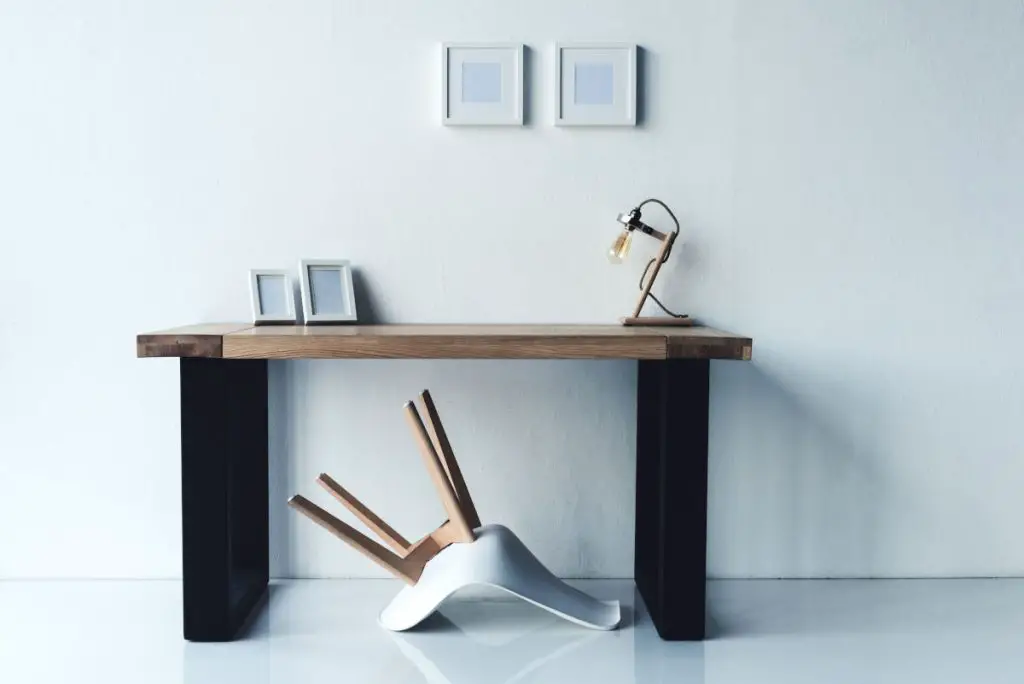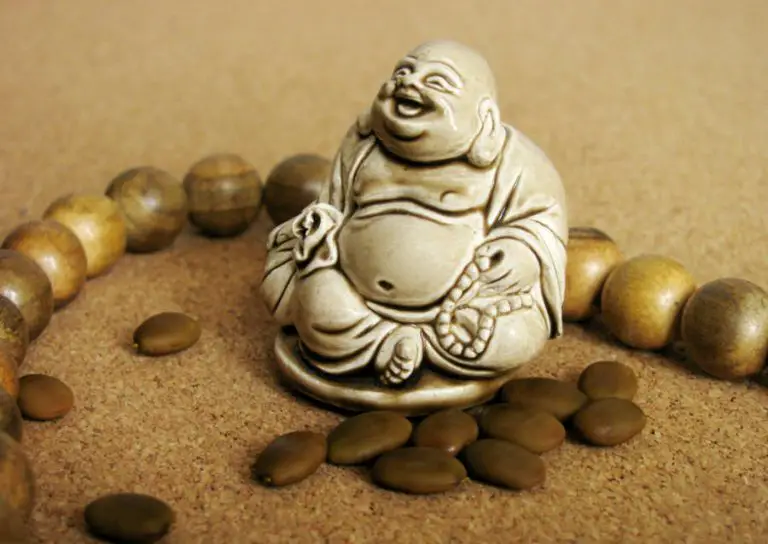Have you ever walked into a room and felt instantly at ease? Or maybe you’ve experienced a space that feels oddly draining or tense? Our surroundings have a powerful effect on our well-being, and the principles of feng shui offer a unique lens for creating a harmonious and supportive home environment.
In this article, we’ll explore various interior design elements that can disrupt the flow of energy and hinder the principles of feng shui. From oversized lights to unbalanced room layouts, each aspect plays a crucial role in shaping the energy dynamics within a space.
Join us as we delve into the intricate world of feng shui and uncover the key elements that contribute to creating harmonious and auspicious living spaces. Let’s begin!
Oversized and Low-Hanging Lights
Light plays a crucial role in setting the mood and energy of a space. In feng shui, we aim to create a sense of balanced illumination that promotes feelings of comfort and well-being. Oversized or low-hanging light fixtures can disrupt this balance and introduce unwanted energy into your home.
Negative Impact on Energy Flow
Large, looming lights can feel oppressive, casting heavy shadows and creating a sense of stagnancy in the chi flow. This is especially true in rooms where you want to relax and unwind, such as the bedroom or living room.
Low-hanging fixtures, on the other hand, can introduce a feeling of being weighed down or restricted. Imagine walking through a room and constantly having to duck under a light fixture – it’s not exactly conducive to a feeling of ease!
Alternatives to Oversized Lights
If you’re drawn to dramatic lighting, consider scaling down the size of the fixture or opting for a design that distributes light more evenly. Recessed lighting or strategically placed track lighting can provide ample illumination without dominating the space.
In smaller rooms, consider sconces or wall-mounted fixtures that free up headroom and create a more intimate atmosphere.
Adjusting Lighting Levels for Balance
The key to good feng shui lighting is achieving a balance between brightness and softness. Layering your light sources is a great way to achieve this. Combine overhead lighting with table lamps, floor lamps, or dimmer switches that allow you to adjust the intensity according to your needs.
Placing Furniture in Front of Windows
Windows are the eyes of your home, offering a connection to the outside world and a vital source of natural light and fresh air. In feng shui, we aim to maximize these benefits by ensuring a smooth flow of energy through the windows and throughout the room. However, placing furniture directly in front of windows can disrupt this flow.

Blocking Natural Light and Airflow
When furniture blocks windows, it hinders the natural light that uplifts our mood and energizes the space. Reduced airflow can also lead to feelings of stagnation and discomfort. This is especially true for large pieces of furniture like sofas or bookshelves positioned directly against a window.
Solutions for Furniture Placement
If possible, arrange your furniture to allow ample space around windows. Ideally, there should be a few feet between the furniture and the window to ensure a smooth flow of energy.
Here are some additional tips:
- Lower profile furniture: Opt for lower profile furniture pieces, like benches or ottomans, in front of windows. This allows for natural light to filter through while still providing some definition of the seating area.
- Sheer curtains: Sheer curtains offer a great compromise, allowing natural light to flow freely while still providing some privacy.
- Angled furniture placement: If rearranging furniture completely isn’t an option, consider angling a chair or small sofa slightly away from the window. This allows for better light penetration and maintains a connection to the outdoors.
Maximizing Energy Flow While Maintaining Privacy
Even with careful furniture placement, some situations might call for additional privacy measures. In these cases, consider window treatments like blinds or roller shades that can be easily adjusted to control light and maintain a connection to the outdoors when desired. Plants placed strategically near windows can also soften the visual impact of furniture without completely blocking the flow of energy.
By following these tips, you can create a harmonious balance between furniture arrangement, natural light, and privacy, ensuring your windows continue to serve as portals to a bright and uplifting energy flow.
Related reading: 17 External Features of a House that are Bad Feng Shui and How to Fix It – Opens in new tab
Furniture with Sharp Edges
Furniture with sharp edges may unwittingly accumulate negative energy in your living space, disrupting the flow of chi and creating a sense of tension or discomfort. These harsh angles can contribute to a stagnant energy flow, hindering the overall harmony and balance of your environment. This applies to furniture with pointed ends, sharp corners on tables or shelves, and even exposed bed frames.
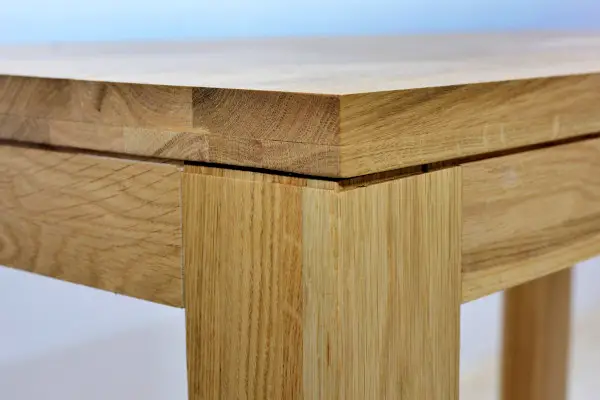
Negative Energy Accumulation
Sharp edges are believed to create a phenomenon called “sha chi,” which translates to “arrow energy.” Imagine the sharp corner of a coffee table jutting out towards your favorite armchair – that pointed edge is symbolically like an arrow, directing negative energy right at you. Over time, this can lead to feelings of restlessness, anxiety, or even headaches.
Rounded and Soft-Edged Alternatives
The good news is that there are many ways to soften the impact of sharp edges in your home. Here are a few ideas:
- Swap Square for Round: Consider replacing square or rectangular coffee tables with oval or round ones. This simple switch can make a big difference in the overall energy of the room.
- Curved Silhouettes: When shopping for new furniture, opt for pieces with curved silhouettes. Sofas with rounded arms, armchairs with gently sloping backs – these all contribute to a more harmonious flow of chi.
- Fabric Softeners: For existing furniture, use throws or blankets draped strategically over sharp edges. This not only adds a touch of coziness but also helps to deflect negative energy.
Balancing Aesthetics and Feng Shui Principles
Finding harmony between feng shui principles and your personal style is key. You don’t have to sacrifice aesthetics to create a good feng shui space. There are many beautiful furniture pieces available with soft, curved edges that complement a variety of design styles.
Related reading: 11 Feng Shui Benefits That Will Transform Your Life (From Sleep to Success!)-Opens in new tab
Excessive Open Shelving
Excessive open shelving can lead to the dispersion of energy in your space, causing a sense of disarray and imbalance. While open shelving offers an opportunity to display decorative items and organize belongings, too much can overwhelm the senses and disrupt the flow of chi.
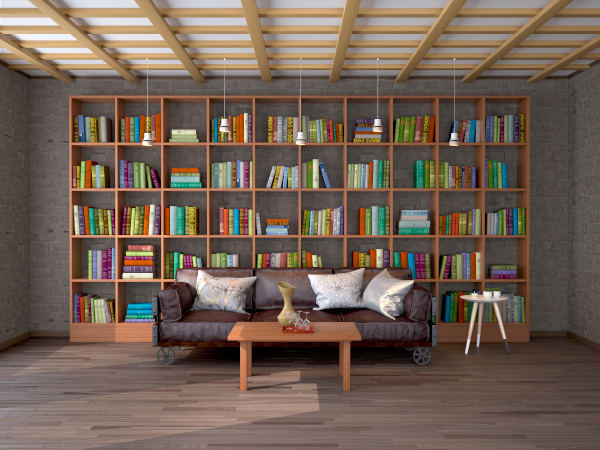
Strategies for Minimizing Open Shelving
To address this issue, consider implementing strategies for minimizing open shelving and creating a more streamlined and balanced environment. Start by decluttering and curating the items displayed on your open shelves, focusing on quality over quantity. By reducing visual clutter, you can create a sense of spaciousness and clarity that promotes a more harmonious energy flow.
Utilizing Closed Storage Options
Utilizing closed storage options offers a practical solution for containing clutter and maintaining a sense of order in your space. This is especially true for rooms like the bedroom, where a sense of calm and relaxation is paramount.
Cabinets, drawers, and storage bins provide hidden storage solutions that keep belongings out of sight while preserving the integrity of your feng shui design. Incorporating closed storage options allows you to strike a balance between functionality and aesthetics, creating a visually pleasing and energetically balanced environment.
Related reading: Avoid Bad Feng Shui: 12 House Features to Improve – Opens in new tab
Uncomfortable Seating Arrangements
Uncomfortable seating arrangements can significantly impact both social dynamics and the flow of energy within your space. When seating options are not conducive to relaxation and interaction, it can create a sense of unease and hinder the natural flow of chi.

Creating Inviting Seating Areas
The key to good feng shui seating is to encourage conversation and connection. Here are some tips:
- The Conversational Circle: Arrange chairs and sofas in a conversational circle, allowing people to easily face and talk to one another. This fosters a sense of intimacy and encourages lively discussions.
- Balance and Asymmetry: While symmetry can be pleasing, a perfectly symmetrical layout can feel stiff and formal. Introduce a touch of asymmetry by placing an accent chair at an angle or using a mismatched end table. This creates a more dynamic and inviting space.
- Traffic Flow: Consider the natural flow of traffic in the room. Leave ample space between seating areas to allow people to move around comfortably without feeling cramped.
Incorporating Cozy Elements for Comfort
Comfort is key to creating a space that encourages people to linger and connect. Here’s how to add a touch of coziness:
- Plush Seating: Opt for chairs and sofas with comfortable cushions and ample back support.
- Soft Lighting: Layer your lighting with table lamps and floor lamps to create a warm and inviting ambiance.
- Throws and Pillows: Drape throws and add decorative pillows to seating areas. This not only adds visual interest but also provides extra comfort.
Adding layers of comfort not only enhances the aesthetic appeal of your space but also promotes a sense of well-being and contentment.
Study: Boughton, Judith Ann, “Effects of Seating Arrangement on Affective Meanings and Group Interaction in Healthy Senior Citizens” (1986). Masters Theses. 1307.
Disorganized Entryways
The entryway is the first impression of your home, both for yourself and your guests. In feng shui, it’s considered the “mouth of chi,” the point where energy enters your dwelling. A disorganized entryway can create a sense of clutter and stagnation, hindering the flow of positive energy throughout your home.
First impressions matter, and this holds true in feng shui as well. A cluttered and chaotic entryway sets the tone for the rest of your home, and can leave you feeling stressed and overwhelmed every time you walk through the door.
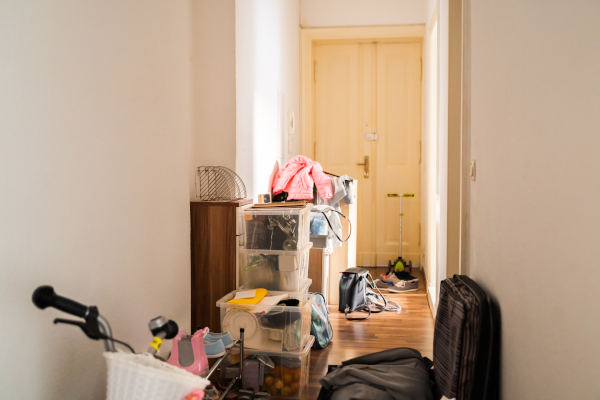
Entryway Organization Tips
The good news is that a few simple organizational tweaks can transform your entryway into a welcoming and harmonious space. Here are some tips:
- Clear the Clutter: Start by removing any shoes, bags, or outerwear that are habitually left at the door. Invest in a coat rack, shoe cabinet, or designated basket to keep these items organized and out of sight.
- Tame the Mail: Designate a specific spot for mail and keys, like a mail holder or a small tray. Avoid letting mail pile up on surfaces, as it can create a feeling of mental clutter.
- Mind the Mirror Placement: A well-placed mirror can enhance the feeling of spaciousness and reflect positive energy into your home. Just avoid placing it directly opposite the front door, as this can symbolically push energy back out.
Welcoming and Inviting Entryway Designs
Once you’ve addressed the clutter, consider design elements that promote a sense of welcome.
- Warm Lighting: Ensure your entryway has adequate lighting. A well-lit entryway feels more inviting and safe.
- Doormat Magic: Choose a doormat that reflects your style and complements your home’s exterior. It not only adds a decorative touch but also helps trap dirt and debris from entering your home.
- Fresh Scents: A diffuser or a bowl of potpourri with a calming scent can create a positive and inviting atmosphere.
- Artful Touches: Display a piece of artwork or a decorative bowl to add a touch of personality and visual interest.
Related reading: Geography’s Role in Feng Shui: Choosing the Right Location – Opens in new tab
Harsh or Overwhelming Colors
Colors are powerful tools in interior design, influencing not just the aesthetics of a space but also the mood and energy it evokes. In feng shui, we aim to create a sense of balance and tranquility within a home. Harsh or overwhelming colors can disrupt this balance, creating feelings of agitation, anxiety, or even physical discomfort.
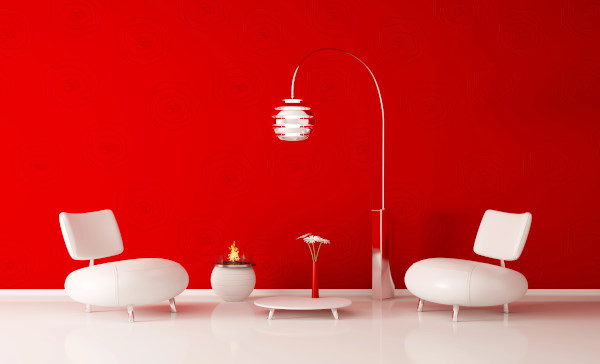
Influence on Mood and Energy
Certain colors have well-documented psychological effects. For example, bright reds and oranges can be stimulating and energetic, but too much of them can feel overwhelming and lead to restlessness. On the other hand, cool blues and grays can promote feelings of calmness and peace, but an overly monochromatic space can feel sterile and uninviting.
Selecting Calming Color Palettes
When choosing colors for your home with feng shui in mind, consider these tips:
- Embrace Earthy Tones: Earthy tones like beige, taupe, and light green create a sense of grounding and stability. These colors serve as a wonderful foundation for your color palette.
- The Power of Neutrals: Neutrals like white, cream, and light gray offer a sense of spaciousness and tranquility. They’re perfect for creating a calming backdrop for bolder accent colors.
- Nature’s Inspiration: Draw inspiration from nature. Soft greens and blues reminiscent of a peaceful meadow or calming ocean tones can create a sense of serenity in your space.
Incorporating Pops of Color Mindfully
While a calming color palette is ideal, there’s still room for pops of color! Here’s how to do it mindfully:
- Accent with Intention: Use bold colors like reds, yellows, or oranges sparingly as accent colors. A throw pillow, a piece of artwork, or a decorative vase in a vibrant hue can add a touch of energy without overwhelming the space.
- The Rule of Three: Limit yourself to three dominant colors in a room. This creates visual harmony and prevents the space from feeling chaotic.
- Consider Color Placement: Warmer colors like red and orange tend to visually advance, so use them strategically on walls you want to feel closer. Conversely, cooler colors like blue and green recede, making them ideal for expansive walls.
Comparison of different color palettes and their associated mood and energy effects.
| Color Palette | Mood and Energy Effects | Recommended Applications |
| Earthy Tones | Grounding, warm, and comforting | Living rooms, bedrooms, and study areas |
| Cool Blues | Calming, serene, and refreshing | Bedrooms, bathrooms, and meditation spaces |
| Warm Neutrals | Inviting, cozy, and nurturing | Living rooms, dining rooms, and reading nooks |
| Vibrant Reds | Energizing, passionate, and stimulating | Dining rooms, kitchens, and areas for social gatherings |
| Soft Pastels | Soothing, delicate, and peaceful | Nurseries, bedrooms, and relaxation areas |
| Nature-inspired Greens | Refreshing, rejuvenating, and harmonizing | Kitchens, bathrooms, and areas with indoor plants |
| Bold Jewel Tones | Luxurious, dramatic, and stimulating | Accent walls, statement pieces, and artistic elements |
🍀 Our “Feng Shui Master” app is your trusted companion, offering a useful guide to implementing Feng Shui principles. Try it now!
Lack of Nature Elements
The absence of nature elements in interior spaces can disconnect us from the natural world, hindering our ability to cultivate a harmonious and balanced environment. Incorporating elements inspired by nature is essential for creating a sense of connection and vitality within your home.
Recognizing the importance of connecting with nature indoors underscores the need to incorporate natural elements into your interior design. From biophilic design principles to indoor gardening, there are numerous ways to bring the beauty and tranquility of nature into your living space.
Incorporating Plants and Natural Materials
There are many ways to bring nature indoors. Here are a few ideas:
- The Power of Plants: Houseplants are a fantastic way to connect with nature. Choose plants that suit your lifestyle and light conditions. Lush ferns in the bathroom add a touch of the tropics, while a vibrant snake plant in the corner brings life to a living room.
- Natural Materials Matter: Opt for furniture and decor made from natural materials like wood, stone, bamboo, or woven fibers. These materials introduce organic textures and earthy tones, creating a sense of connection to the natural world.
- Earthy Color Palette: As discussed previously, consider incorporating earthy tones like beige, green, and brown into your color scheme. These colors evoke a sense of nature and create a calming and grounded atmosphere.
Enhancing Energy and Vitality in Interior Spaces
Enhancing energy and vitality in interior spaces requires a holistic approach that embraces the principles of biophilic design. Here are some ideas:
- Fresh Air Flow: Open windows regularly to allow fresh air to circulate throughout your home. This not only brings in invigorating oxygen but also helps to remove stagnant energy.
- Sunlight is Key: Maximize the use of natural light whenever possible. Open your curtains during the day and consider strategic placement of mirrors to reflect sunlight further into your space.
- Natural Soundscapes: Consider incorporating natural sounds like flowing water features or recordings of birdsong. These sounds can create a sense of tranquility and connection to the outdoors.
Research on biophilic design and its positive effects on stress reduction and cognitive function. Terrapin Bright Green. (n.d.). “The Economics of Biophilia: Why designing with nature in mind makes financial sense.”
Poorly Positioned Mirrors
Poorly positioned mirrors can inadvertently reflect negative energy or clutter, disrupting the harmonious flow of chi within your space. Mirrors have the power to amplify both positive and negative energy, making it essential to consider their placement carefully.

Mirrors facing beds are believed to reflect and bounce energy, potentially disrupting sleep patterns and creating a sense of restlessness. To avoid this, it’s recommended to position mirrors in bedrooms so they do not directly face the bed. Placing mirrors on adjacent walls or inside closets can still provide functional benefits without compromising the quality of sleep.
Guidelines for Mirror Placement
Guidelines for mirror placement vary depending on the specific layout and energy dynamics of each space. In general, mirrors should be strategically placed to enhance natural light, expand visual space, and create a sense of balance and harmony. Avoid placing mirrors directly opposite doorways or windows, as this can cause energy to bounce back and forth, creating a sense of instability.
Additionally, enhancing positive energy with strategic mirror placement involves considering the intended purpose and desired effect of each mirror in your space. For example:
- A strategically placed mirror can visually expand a small space by reflecting light and creating an illusion of depth.
- Mirrors placed opposite windows can bounce natural light around the room, creating a brighter and more cheerful atmosphere.
- Use mirrors to reflect beautiful architectural features, artwork, or a calming nature scene outside a window.
Want to learn more about Feng Shui? Take a look at these Courses and Books – Aff.link
Glass Elements
Glass elements, while stylish and contemporary, can have a significant impact on the energy flow within your space. It’s important to consider the placement and quantity of glass elements to ensure they contribute positively to the overall harmony and balance of your home.

Glass Dining Table
While a glass dining table can create a feeling of spaciousness, it can also introduce an element of insubstantiality. In feng shui, the dining table represents stability and grounding (square tables), as it’s a place where families and friends gather to connect and nourish themselves. A completely transparent surface can feel impermanent and hinder this sense of groundedness.
Solutions:
- Grounding Base: Opt for a glass dining table with a solid wood or stone base. This introduces an element of stability and helps to visually “anchor” the table in the space.
- Table Runner and Placemats: Use a textured table runner and fabric placemats to add warmth and visual interest. This breaks up the expanse of glass and creates a more inviting dining experience.
- Consider Alternatives: If a completely transparent table feels too insubstantial, consider a table with a frosted or etched glass surface. This offers some level of transparency while still providing a more solid foundation.
Glass Coffee Tables
Similar to glass dining tables, glass coffee tables can create a feeling of visual lightness but also lack grounding energy. This is especially true in living rooms, where we want to feel relaxed and comfortable.
Solutions:
- Solid Base with Glass Top: Choose a coffee table with a solid wood or upholstered base and a glass top. This provides the visual openness of glass while offering a more stable foundation.
- Woven Tray or Rug: Place a woven tray or a small rug on the glass surface. This adds texture, warmth, and visual interest, breaking up the expanse of glass and creating a more inviting feel.
- Consider Alternatives: For a more grounded feel, consider a solid wood or upholstered coffee table. These offer a sense of stability and can be visually balanced with other glass elements in the room, like a strategically placed mirror.
Mirrored Walls
Mirrored walls can be visually overwhelming and create a sense of restlessness. The constant reflection of movement and activity can disrupt the flow of chi and make it difficult to relax.
Solutions:
- Limited Use: Limit the use of mirrored walls to small accent areas or behind shelving units where they reflect positive elements like artwork or decorative objects.
- Consider Alternatives: Instead of a full mirrored wall, opt for a large piece of artwork or a gallery wall. This adds visual interest without the overwhelming reflection of a mirrored surface.
- Soften the Reflection: If you must have a mirrored wall, consider using a material with a slight tint or an antiqued finish. This softens the reflection and creates a less visually stimulating environment.
Glass Partitions
Glass partitions can be a great way to separate spaces while maintaining a sense of openness. However, an excessive use of glass can create a feeling of fragmentation and make it difficult to establish distinct energy zones within your home.
Solutions:
- Partial Glass Partitions: Opt for glass partitions that only extend partway up the wall, allowing for some visual separation while maintaining a sense of connection between spaces.
- Window Treatments: Use sheer curtains or blinds on glass partitions. This allows you to control the level of transparency and create a more defined energy zone when needed.
- Strategic Placement: Carefully consider the placement of glass partitions. Avoid using them in areas where privacy and a sense of containment are important, like bedrooms or bathrooms.
By carefully considering the placement and design of glass elements in your space, you can harness their beauty and functionality to enhance the overall energy flow and create a more harmonious and balanced environment.
Related reading: Surrounding Buildings that are BAD Feng Shui and How to Overcome Their Effect – Opens in new tab
Excessive Electronic Devices
In today’s tech-driven world, our homes are often filled with a multitude of electronic devices – computers, laptops, tablets, smartphones, TVs – the list goes on. While these devices offer endless entertainment and connection, from a feng shui perspective, an overabundance of electronics can disrupt the flow of calming energy, or chi, and hinder relaxation.

Electronic devices emit electromagnetic fields (EMFs) that can disrupt the natural flow of energy within a space. This can lead to feelings of restlessness, difficulty concentrating, and even disrupted sleep patterns. The blue light emitted by screens can further suppress melatonin production, a hormone essential for regulating sleep.
Mindful Placement of Electronic Devices
Mindful placement of electronic devices is key to minimizing their impact on energy flow and well-being. Keep devices such as smartphones, laptops, and tablets away from areas designated for relaxation, sleep, or socializing to reduce their disruptive influence.
Consider incorporating technology-free rituals into your daily routine, such as turning off devices an hour before bedtime or designating specific times for screen-free activities. By disconnecting from screens and digital distractions, you can cultivate a deeper sense of presence and mindfulness in your daily life.
Remember, technology is a powerful tool, but it’s important to create boundaries and establish mindful habits to ensure it doesn’t disrupt the peaceful energy flow within your home.
Unused or Neglected Spaces
Unused or neglected spaces in your home can contribute to energy stagnation, creating areas that feel stagnant or lifeless. These neglected spaces can disrupt the overall flow of energy within your home, leading to feelings of disconnection and imbalance.
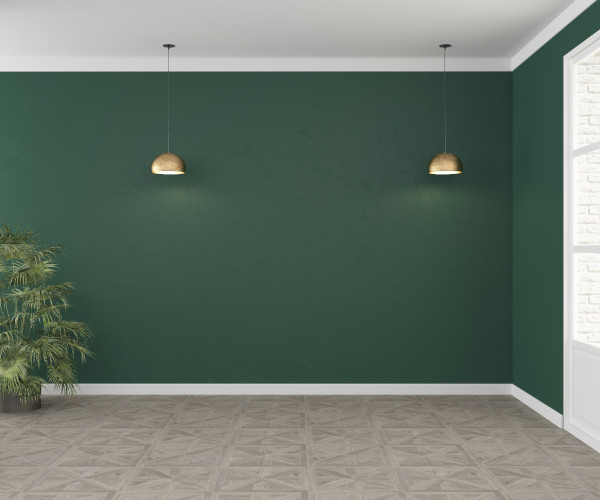
Repurposing Neglected Spaces
Repurposing neglected spaces offers an opportunity to revitalize and energize your home environment. Consider transforming unused corners or rooms into functional areas that serve a purpose and contribute positively to the overall energy flow.
Whether it’s a cozy reading nook, a home office, or a meditation space, repurposing neglected areas allows you to maximize the potential of your home and create spaces that support your lifestyle and well-being.
Incorporating Intentionality into Every Corner of the Home
Feng shui is all about imbuing your home with intentionality. Every corner of your space should reflect your needs and aspirations. By revitalizing neglected areas, you’re not just creating more usable square footage; you’re actively shaping the energy flow within your home.
Here are some tips for incorporating intentionality:
- Define the Purpose: Once you’ve decluttered and cleansed the space, determine its new purpose. Will it be a home office for focused work? A reading nook for relaxation? Define the purpose to guide your design choices.
- Feng Shui for the Specific Use: Research feng shui principles for the intended function of the space. For a home office, this might involve positioning your desk for productivity and flow. For a reading nook, it might involve creating a cozy and calming atmosphere.
- Curate with Purpose: Surround yourself with objects that inspire you and bring you joy. Avoid filling your home with clutter or purely decorative items that hold no meaning.
- Personalize the Space: Don’t forget to personalize the space! Add decorative touches that reflect your style and bring you joy.
Related reading: Beyond Miracles: Understanding the Real Impact of Feng Shui on Luck – Opens in new tab
Lack of Personalized Touches
In feng shui, creating a harmonious home extends beyond furniture placement and color schemes. It’s about infusing your space with your unique personality and creating a haven that reflects your inner self. A lack of personal touches can leave a home feeling sterile and uninspired, hindering the flow of positive energy, or chi.
Your home is a reflection of you. When you surround yourself with objects that hold personal meaning and tell your story, you create a space that feels authentic and uplifting. This sense of personalization fosters a stronger connection to your home and promotes a sense of well-being.
Infusing Personality into Interior Design for Positive Energy Vibes
Infusing personality into interior design for positive energy vibes involves embracing your unique tastes and preferences while honoring the principles of feng shui. Here are some ways to infuse your personality into your design choices:
- Display Artwork and Photos: Showcase artwork that resonates with you, whether it’s a piece you created yourself, a souvenir from a cherished trip, or a family heirloom. Hang photos of loved ones and special memories to create a sense of connection and belonging.
- Travel Treasures: Display mementos from your travels, like souvenirs, postcards, or photographs. These objects not only add visual interest but also serve as reminders of joyful experiences and broaden the energy within your home.
- Curate Collections: Do you have a passion for seashells, antique books, or vintage cameras? Create curated collections that showcase your interests and add a touch of personality to your shelves or display cabinets.
- Handmade Touches: Incorporate handmade items, whether they’re pieces you created yourself, gifts from loved ones, or unique finds from local artisans. These objects add a personal touch and infuse your space with warmth and character.
- Showcase Your Hobbies and Interests: If you’re passionate about music, display your favorite instruments. If you love reading, create a cozy reading nook with a comfortable chair and overflowing bookshelves. Don’t be afraid to showcase your hobbies and interests – they are part of what makes you unique.
- Showcase Your Hobbies and Interests: If you’re passionate about music, display your favorite instruments. If you love reading, create a cozy reading nook with a comfortable chair and overflowing bookshelves. Don’t be afraid to showcase your hobbies and interests – they are part of what makes you unique.
Related reading: Why Your Feng Shui Doesn’t Work? 9 Reasons and How to Fix Them – Opens in new tab
Furniture that Does Not Lift off the Ground
In feng shui, the flow of energy, or chi, is essential for creating a harmonious and balanced living space. Furniture that sits directly on the ground can disrupt this flow, leading to feelings of stagnation and heaviness. Here’s why opting for furniture with legs can be beneficial from a feng shui perspective:
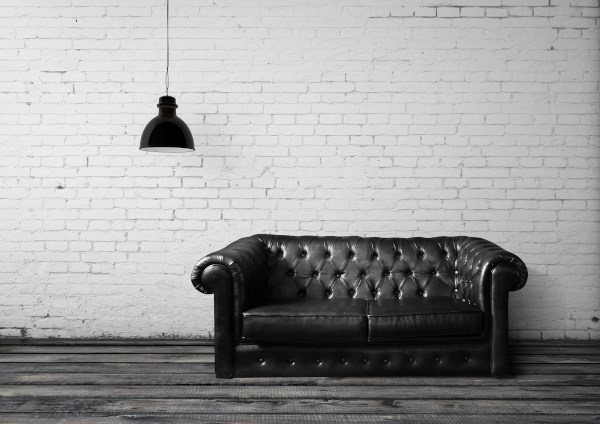
Imagine a room filled with low-lying furniture like ottomans, beanbags, and floor cushions. While these pieces offer comfort, they can create a sense of visual and energetic blockage. The space beneath the furniture becomes stagnant, hindering the smooth flow of chi. This can lead to feelings of sluggishness, lack of motivation, and difficulty concentrating.
Choosing Furniture with Legs for Better Airflow
Elevating furniture with legs allows for better air circulation beneath and around the piece. This not only promotes a sense of cleanliness and freshness but also symbolically encourages the flow of positive energy. Opting for furniture with open bases, like chairs with exposed legs or tables with slatted bottoms, further enhances this effect.
Creating a Sense of Lightness and Openness with Elevated Furniture
Furniture with legs visually lifts the weight off the ground, creating a feeling of spaciousness and openness. This is particularly important in smaller spaces, where low-lying furniture can make the room feel cramped and crowded. Additionally, elevated furniture allows for easier cleaning underneath, promoting a sense of hygiene and well-being.
Exceptions and Considerations
While choosing furniture with legs is generally recommended for good feng shui, there are always exceptions. Here are some things to keep in mind:
- Low-profile furniture in specific areas: In areas like the bedroom, where relaxation is key, low-profile furniture like platform beds can create a sense of coziness and intimacy.
- Balance is key: While elevating furniture can promote positive energy flow, avoid creating a space that feels too sterile or clinical. Balance low-lying pieces with furniture that has legs to create a harmonious and visually interesting environment.
- Personal preference: Ultimately, your comfort and personal style should be the guiding principles when choosing furniture. If a low-lying piece brings you joy and comfort, there’s no need to replace it simply because it doesn’t have legs.
🍀 Our “Feng Shui Master” app is your trusted companion, offering a useful guide to implementing Feng Shui principles. Try it now!
One Bedside Bedroom
In bedroom design, balance plays a crucial role in creating a harmonious and restful environment. The placement of furniture and accessories, including bedside cabinets, contributes to the overall sense of symmetry and harmony in the space.
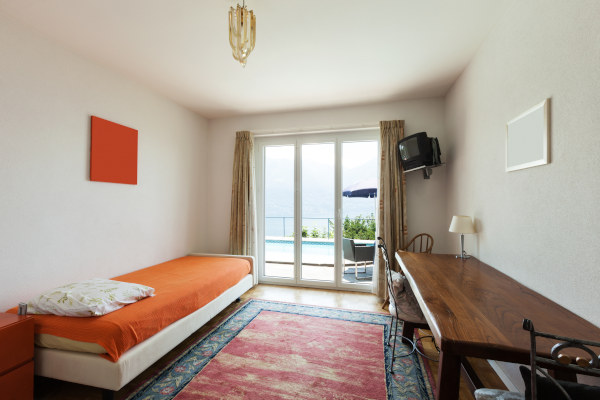
The importance of balance in bedroom design cannot be overstated, as it promotes a sense of tranquility and well-being. A well-balanced room layout supports restful sleep and relaxation, allowing you to recharge and rejuvenate both physically and mentally.
However, it’s important to remember that achieving balance doesn’t always require perfect symmetry. In a one-bedside bedroom, the key is to find alternative ways to create a sense of visual and energetic harmony.
Creating Symmetry and Harmony in the Bedroom
Creating symmetry and harmony in the bedroom involves thoughtful consideration of furniture placement and design elements. Here are some suggestions:
- Balance with Art or Decor: Place a piece of artwork or decorative object on the opposite side of the bed to visually balance the space. This doesn’t have to be identical to the items on the nightstand, but it should have a similar weight and scale.
- Area Rug Placement: Use an area rug that extends partially under the bed and on both sides. This creates a sense of visual enclosure and grounding, promoting a sense of balance and stability.
- Lighting Symmetry: Ensure balanced lighting on both sides of the bed, even if you only have one bedside lamp. You can achieve this with a wall-mounted sconce or a floor lamp on the opposite side of the room.
- Emphasize Minimalism: Maintain a clutter-free environment by keeping the surface of the bedside cabinet clear and organized. This promotes a sense of calmness and enhances the feeling of spaciousness.
Maximizing Space and Functionality with One Bedside Cabinet
Here are some tips for maximizing space and functionality with one bedside cabinet in your one-bedside bedroom:
- Choose the Right Side: Strategically place the single bedside table on the side where it’s most convenient for the person who sleeps closest to the wall. This ensures easy access to essentials like a lamp, phone charger, or book.
- Multifunctional Furniture: Opt for a nightstand with built-in drawers or shelves to maximize storage space. This allows you to keep necessary items close at hand without cluttering the surface.
- Wall-Mounted Shelves or Lights: If floor space is limited, consider wall-mounted shelves or sconces above the nightstand. This provides additional storage or lighting without sacrificing valuable floor space.
Different Floors throughout the House
Having different floors throughout the house can disrupt the natural flow of energy and continuity within your home environment. Each floor represents a distinct energy level, and abrupt transitions between them can create disruptions in the overall energy flow.
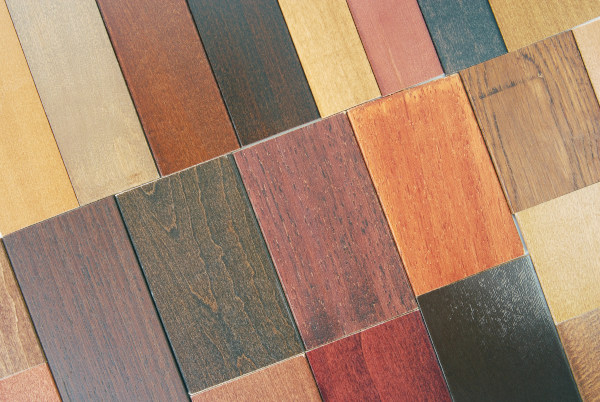
Imagine walking barefoot through your home and encountering sudden transitions from smooth wood to plush carpet. These changes in texture and material can create energetic disruptions, symbolically representing breaks in the flow of chi. This can lead to feelings of restlessness, lack of focus, and difficulty connecting with different areas of your home.
Creating Cohesion with Flooring Transitions
Creating cohesion with flooring transitions is essential for maintaining a harmonious and balanced environment. Consider using consistent flooring materials or colors throughout interconnected spaces to establish a sense of continuity and flow. Smooth transitions between different flooring types, such as using transition strips or thresholds, help bridge the gap between floors and minimize energetic disruptions.
Beyond addressing transitions, consider these feng shui principles when choosing flooring materials:
- Natural Materials: Opt for natural materials like wood, stone, or bamboo whenever possible. These materials are believed to connect you to the natural world and promote feelings of grounding and stability.
- Avoid Harsh Transitions: While contrasting colors or textures can be visually striking, avoid creating harsh transitions in high-traffic areas like hallways or entryways. These abrupt changes can disrupt the flow of energy and create a sense of unease.
- Floor Direction: While floor direction in feng shui can be quite nuanced, a general recommendation suggests laying wood planks in the direction of the main energy flow within a space. This can symbolically guide positive energy throughout the room.
Want to learn more about Feng Shui? Take a look at these Courses and Books – Aff.link
Unbalanced Room Layouts
In feng shui, achieving balance is crucial for creating a harmonious and well-flowing space. Unbalanced room layouts, where furniture placement, visual weight, or even lighting distribution lack equilibrium, can disrupt the flow of positive energy, or chi, and hinder feelings of peace and well-being.
Symmetry is often emphasized in feng shui as it creates a sense of order, stability, and visual calmness. Imagine a living room where all the furniture is clustered on one side, leaving the other side feeling empty. This imbalance can create a sense of unease and disrupt the natural flow of energy within the space.
While perfect symmetry isn’t always necessary, striving for a sense of balance is key.
Achieving Balance with Furniture Arrangement
Achieving balance with furniture arrangement is key to creating a harmonious room layout. Even in rooms with challenging layouts, there are ways to achieve balance through strategic furniture placement:
- Commanding Position: Place key furniture pieces, like the bed in a bedroom or the sofa in a living room, in a commanding position. This means having a solid wall behind them and allowing ample space in front for movement and flow.
- Anchoring Elements: Use furniture pieces like bookcases or dressers to “anchor” specific areas of the room, creating a sense of visual stability and balance.
- Focal Points: Create focal points in different areas of the room using artwork, mirrors, or statement furniture pieces. This helps draw the eye and distribute visual interest evenly.
- Visual Weight Distribution: Consider the “visual weight” of furniture pieces. Balance the weight by placing larger pieces on opposite sides of the room, even if they aren’t identical.
- Grouping: Group similar items together, like side tables and lamps, to create a sense of cohesion and visual stability.
- Leaving Space: Avoid crowding furniture against walls. Leave ample space for movement and breathing room to prevent a feeling of congestion and maintain the flow of energy.
Remember, creating a balanced and harmonious space doesn’t require a cookie-cutter approach. By understanding the core principles of feng shui and applying them creatively, you can transform any room, regardless of its layout, into a haven of peace and well-being.
Overcrowded Rooms
Overcrowded rooms can have several negative effects on both the physical and energetic aspects of your space, leading to feelings of discomfort and imbalance. Recognizing the signs of overcrowding and implementing strategies to create space are essential for restoring harmony and promoting a sense of well-being in your home.
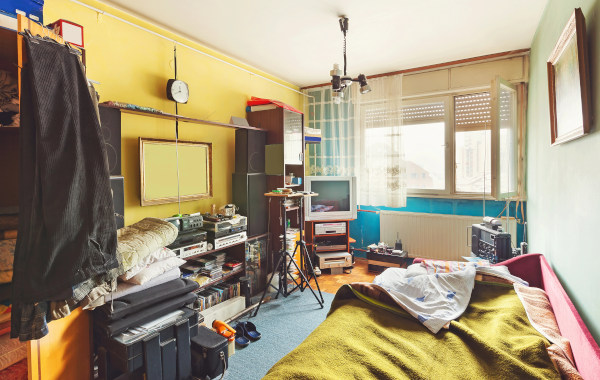
Negative Effects of Overcrowded Rooms
- Stagnant Energy: Overcrowding is believed to hinder the flow of chi, leading to feelings of stagnation and sluggishness. This can negatively impact your mood, energy levels, and even creativity.
- Stress and Anxiety: The visual clutter and difficulty navigating an overcrowded space can contribute to feelings of stress and anxiety.
- Difficulty Relaxing: Imagine trying to unwind in a room overflowing with stuff – it can be challenging to switch off and achieve a sense of peace and relaxation.
- Reduced Productivity: Clutter can be visually distracting and mentally draining, making it harder to focus and be productive in an overcrowded space.
Signs of Overcrowding
Signs of overcrowding include cluttered surfaces, limited walking space, and difficulty accessing furniture or storage areas. Rooms may feel visually overwhelming, with an abundance of furniture, accessories, and decorative items competing for attention. Additionally, overcrowded rooms may lack a sense of cohesion and flow, with furniture arranged haphazardly and without consideration for energy flow or functionality.
Tips for Creating Space
Now that we’ve identified the problem and its signs, let’s explore solutions:
- Declutter Ruthlessly: Embrace the “less is more” philosophy. Start by sorting through your belongings and discard anything broken, unused, or no longer brings you joy.
- Utilize Storage Solutions: Invest in storage solutions like shelves, cabinets, and ottomans with built-in storage to keep belongings organized and out of sight.
- Embrace Multifunctional Furniture: Choose furniture that serves multiple purposes, like ottomans with storage compartments or sofa beds, to maximize space and minimize clutter.
- Vertical Space Utilization: Utilize vertical space by installing shelves or cabinets that reach the ceiling to maximize storage capacity without sacrificing floor space.
- Let in Natural Light: Open curtains and blinds to allow natural light to flood the room. This can make the space feel more open and airy.
Start small, focus on decluttering one area at a time, and incorporate the tips above to create a more harmonious and inviting space that promotes well-being and fosters the flow of positive energy.
Signs of overcrowded room and practical solutions for each issue
| Sign of Overcrowding | Description | Possible Solutions |
| Cluttered Surfaces | Surfaces such as countertops and tables are covered with items, leaving little space for use or movement. | Declutter surfaces regularly and consider implementing storage solutions to keep items organized and out of sight. |
| Limited Walking Space | There is little room to move freely around the room, with pathways obstructed by furniture or clutter. | Rearrange furniture to create clear pathways and improve flow of movement. Consider removing excess furniture or items to free up space. |
| Overcrowded Furniture Arrangements | Furniture is tightly packed together, leaving little room to maneuver or comfortably use the space. | Remove excess furniture to create a more open and spacious feel. Consider multi-functional furniture pieces to maximize space and functionality. |
| Lack of Breathing Room | The room feels cramped and closed-in, with little room to breathe or relax. | Create visual breaks by incorporating open spaces or negative areas. Opt for furniture with slender profiles to minimize visual bulkiness. |
| Visual Overload | The room is visually overwhelming, with too many decorative items or patterns competing for attention. | Simplify the decor by removing unnecessary items and creating a cohesive color palette. Focus on quality over quantity when selecting decorative pieces. |
Research: Hicks, Dawn Christina. 2020. Understanding Well-Being: Clearing Personal Space for Wellness. Master’s thesis, Harvard Extension School.
End Words
In conclusion, integrating feng shui principles into interior design is essential for creating harmonious and balanced living spaces that support overall well-being and vitality. By addressing common pitfalls such as oversized lights, cluttered entryways, and unbalanced room layouts, you can optimize energy flow and create environments that nurture and uplift.
Whether it’s incorporating natural elements, mindful furniture placement, or personalized touches, every aspect of your home design contributes to its energetic footprint. By embracing these principles and implementing practical strategies, you can cultivate a home environment that not only looks beautiful but also feels energetically nourishing and uplifting for you and your loved ones.
Want to learn more about Feng Shui? Take a look at these Courses and Books – Aff.link
Stay in Touch
 Join our newsletter by using the forms on this website or click here!
Join our newsletter by using the forms on this website or click here! Follow us on Google News
Follow us on Google News Follow us on Facebook
Follow us on Facebook
Feature Image from Depositphotos

